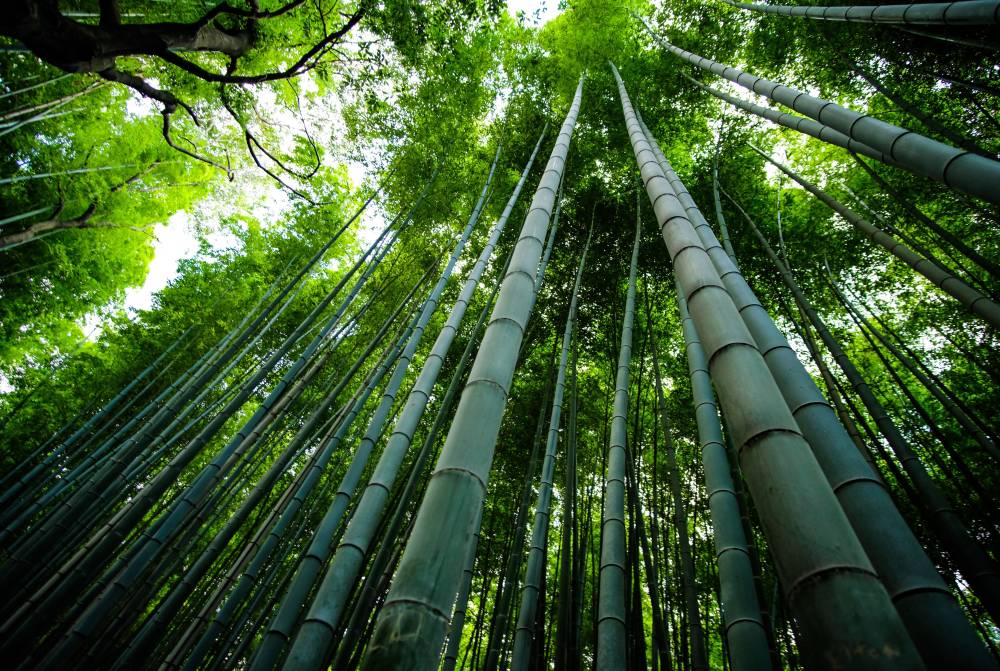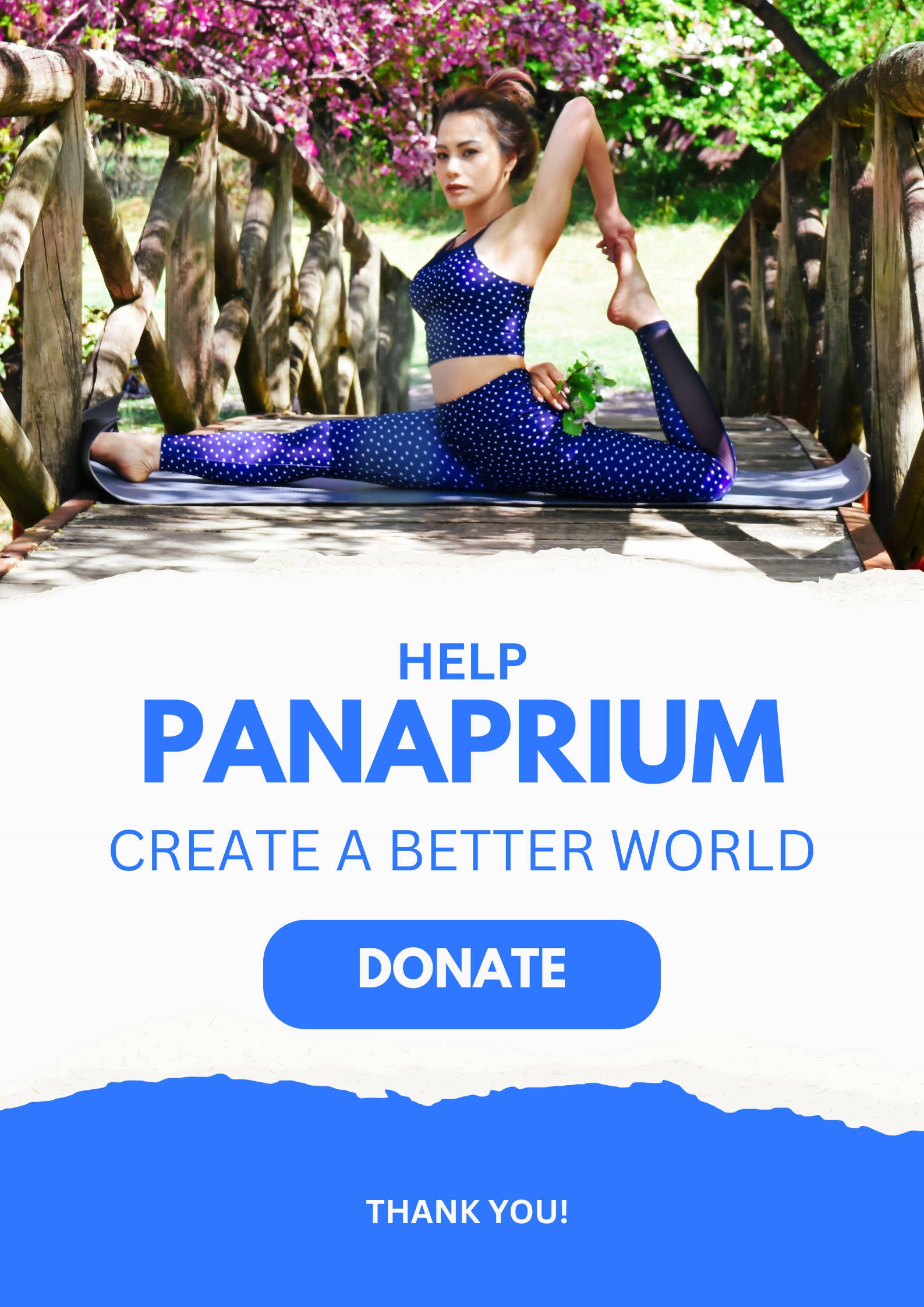
Many fashion brands and designers use bamboo viscose for their new collections. Viscose and rayon made from plants or wood fibers such as bamboo are some of the most common fabrics used for clothing.
Bamboo viscose isn't biodegradable. Viscose and rayon are man-made fabrics. Even though they are made from renewable resources, they aren't natural but semi-synthetic cellulosic fibers derived from wood pulp.
Viscose and rayon fabrics make clothing and accessories such as shirts, dresses, underwear, sportswear, pants, jackets, hats, and shoes.
The popularity of bamboo viscose is rising. Fashion brands and designers use it to meet consumers' demands for trendy and affordable clothing. It's a relatively cheap fiber that makes low-cost and low-quality clothing.
Due to the rise of fast fashion over the last 20 years, buying new clothing has become a distraction and a daily event for many consumers. They are influenced by the latest trends from runway shows, models, celebrities, and social media personalities.
Clothing is now considered a disposable commodity. Fast fashion and the need for instant gratification created a throwaway culture. The most important factors that influence buyers when shopping for new clothes are price, style, and accessibility.
Sustainability isn't on the mind of most consumers. Eco-friendly products still cost more than conventional items made from cheap materials, with poor construction, low quality, and a negative environmental impact.
Synthetic fabrics like polyester, nylon, and acrylic are well-known to be detrimental to the planet. Are semi-synthetic fabrics such as bamboo viscose any better? Are they as environmentally friendly as they seem?
Not all synthetic fabrics are bad for the environment. Read up my list of sustainable synthetic fabrics to learn more about made-fibers that protect the planet much better than other conventional fabrics.
Viscose is a fabric made from natural fibers manufactured with renewable resources. Viscose and rayon fibers are cellulosic fibers made from cellulose often derived from wood pulp.
That is why these fibers are often marketed as eco-friendly. But the truth is that they can be harmful to the environment, eco-systems, and human health.
If you want to buy eco-friendly fabrics to stay away from synthetic materials such as polyester and nylon that they are byproducts of the oil industry, should you choose bamboo viscose?
Many fabrics used in the fashion world today are manufacture with chemical-intensive processes. As consumers, we must think carefully about what we are putting on our skin. The skin is by far the body's largest organ. We have to protect it to stay healthy.
Unfortunately, most dyes, bleaches, and treatments used in the apparel industry are hazardous. Harsh chemical treatments are necessary to enhance fabrics' properties and make them water repellant, wrinkle-free, or stain resistant.
Many textiles are very dangerous. Wearing toxic fabrics may lead to cancer, hormonal dysfunction, insomnia, nausea, immunity harm, anorexia, and behavioral problems. We must get informed on the matter and avoid harmful fabrics to protect the health of our skin and body.
This raises some questions. What is bamboo viscose exactly? Is it eco-friendly and sustainable? Is it biodegradable? Here are some answers.

Panaprium is independent and reader supported. If you buy something through our link, we may earn a commission. If you can, please support us on a monthly basis. It takes less than a minute to set up, and you will be making a big impact every single month. Thank you!
What is viscose
Viscose isn't a synthetic fiber made from petroleum like polyester or nylon. Bamboo viscose isn't a natural fiber either like cotton, linen, hemp, or jute.
Viscose is a man-made cellulosic fiber. It's considered a semi-synthetic fabric and made from regenerated cellulose derived from wood pulp.
Viscose is also known as rayon or viscose rayon. Other man-made fabrics such as lyocell, acetate, modal, and cupro are also cellulosic fibers. These textiles are made from cellulose-based resources like wood, bamboo, soy, or coconut.
Modal is the second generation of viscose rayon. It's a very soft fabric used especially for lingerie and undergarments. It performs much like cotton.
Lyocell is the third generation technology. It's known to be more environmentally friendly than previous generations It's soft, lightweight, and anti-bacterial. It stays odor-free much longer than cotton and is often used for activewear, clothing for sensitive skin, and home textiles such as bedding.

Common synthetic fibers are petroleum-based synthetic fibers such as polyester and nylon. Polyester is the most used fiber for clothing globally. The total production of polyester fibers rose to 55 million tons in 2018 worldwide. It accounts for 52% of all fiber production.
Although rayon and polyester are man-made fabrics, they are very different. Polyester is a synthetic fabric made from petrochemicals. Rayon is a semi-synthetic cellulosic fiber derived from wood pulp.
Read up my article on is rayon a polyester fabric to learn more about the differences between them.
The total production of man-made cellulosic fibers is about 6.7 million tons globally each year. It represents around 6.2% of all textile fiber production worldwide.
Viscose is the most broadly used man-made cellulosic fiber. It accounts for around 79% of the total market share with 5.3 million tons produced in 2018.
Viscose and rayon are very lightweight, soft, breathable, absorbent, and anti-bacterial. They are used in many types of clothing in the fashion world. They are ideal for cheaply produced garments as the primary fiber content. They are used for a substantial part of the fiber composition in most semi-synthetic clothing.
Unfortunately, making clothing from wood or plants requires heavy processing. Viscose production needs a lot of energy, water, and chemicals. Using chemicals, cellulose from wood pulp is dissolved into a viscous fluid. A spinneret then forms filaments of regenerated cellulose out of the solution to make fibers for fabric production.

Bamboo viscose is also known as bamboo rayon. Its fabrication can be extremely polluting. It not only consumes large amounts of resources but heavy chemicals are also toxic to humans and harmful to the environment if released untreated.
Bamboo as a plant is considered natural and eco-friendly. It's used in home furnishings and fabrics. It has amazing properties as a very sustainable crop, fast-growing with almost no fertilizer, pesticides, labor, or additional water.
China is the largest producer of bamboo in the world followed by India. But there is no guarantee that the majority of bamboo grown there is eco-friendly. Intensive bamboo cultivation can be detrimental to the environment without regulations.

Is Bamboo fabric eco-friendly
Bamboo viscose production is generally toxic. It demands the usage of chemicals such as carbon disulfide, sulfuric acid, ammonia, acetone, or caustic soda. These highly hazardous substances harm the environment and put workers' health at risk.
Learn more about the environmental impact of bamboo viscose in my article on why rayon is bad for the environment.
Luckily, there are many different manufacturers of man-made cellulosic fibers. Some of them are taking action to protect the planet, people, and animals living on it.
Sustainable production facilities can almost fully recover and reuse water and chemicals with closed-loop processes.
Sustainable forest management is also a primary concern with bamboo viscose and other man-made cellulosic fiber production. The global textile and apparel industry is responsible for huge deforestation, destruction of ecosystems, and greenhouse gas emissions.
Bamboo viscose can be a very hazardous fabric if it's worn regularly. Its production emits poisonous gas and releases chemicals that pollute drinking water, the soil, and the air. It destroys ecosystems, kills plants and animals.
A lot of textile manufacturers use dangerously toxic chemicals and methods to produce viscose fabrics. Large amounts of water get contaminated during viscose and rayon fibers manufacturing.
Unfortunately, a lot of clothing on the market is made from bamboo viscose. It's labeled natural bamboo fabric when it isn't.
Viscose is used to produced low-quality and cheap garments. Man-made fibers are relatively cheaper to produce than natural fibers. Polyester, nylon, acrylic, viscose, and rayon are some of the cheapest fibers to produce.
They aren't very durable. They will lose their shape and color over time. Fibers will also easily break down when washed.
Viscose isn't a natural fabric at all. The main material used for its production is wood pulp cellulose made from renewable cellulosic plants such as beech trees, pine trees, and bamboo.
Viscose contributes to the number of synthetic fibers escaping through our plumbing and sewage systems. The water expelled from our washing machines transports these fibers to rivers, lakes, and oceans. The amount of microfibers entering the world's oceans is increasing at an alarming rate.

Luckily, key players in the fashion industry are working to develop new eco-friendly manufacturing processes of bamboo viscose. They are working towards using non-toxic solvents, recycling compounds, and biodegradability.
As consumers, we have the power to drive change in the textile and apparel industry. We choose the clothes we buy and who we support with our money.
With a little research, we can pick products made in sustainable production facilities with strict effluent treatment protocols. No toxic and harmful chemical waste should be released into the nearby environment. Instead, water and chemicals must be reused in the next manufacturing loops.
Look for materials treated with sustainable methods and ecological certifications. Read up my article on why eco-friendly fashion is important for my best tips on how to be more eco-friendly with clothes.

Is rayon biodegradable
Rayon and viscose aren't biodegradable. When textiles made from bamboo viscose end up in landfills, they take decades to decompose. They release toxic gases, carbon dioxide, and methane as they degrade, which contributes to pollution and global warming.
Semi-synthetics fabrics like rayon and viscose are washed, bleached, dyed, and treated with many harmful chemicals that get released into the air, soil, and water when thrown away.
Cellulosic fibers that end up in the oceans can take up to hundreds of years to decompose due to cooler temperatures, lack of sunlight, and oxygen.
If you are wondering what to do with old textiles, ready up my article on 10 ways to keep your clothing out of landfills.
Bamboo viscose isn't biodegradable because it won't break down in a reasonably short time after disposal. Most textiles end up in landfills to decompose over many years or be incinerated.
Was this article helpful to you? Please tell us what you liked or didn't like in the comments below.
About the Author: Alex Assoune
What We're Up Against
Multinational corporations overproducing cheap products in the poorest countries.
Huge factories with sweatshop-like conditions underpaying workers.
Media conglomerates promoting unethical, unsustainable products.
Bad actors encouraging overconsumption through oblivious behavior.
- - - -
Thankfully, we've got our supporters, including you.
Panaprium is funded by readers like you who want to join us in our mission to make the world entirely sustainable.
If you can, please support us on a monthly basis. It takes less than a minute to set up, and you will be making a big impact every single month. Thank you.
































0 comments